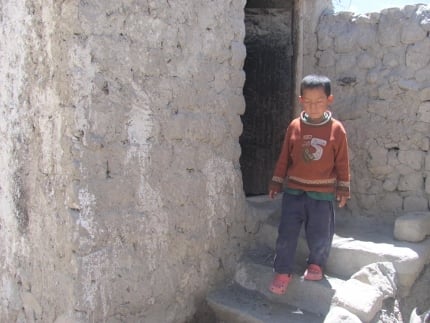Tanzin Dorje can remember a time he could drink straight from the stream that runs through Ladakh’s main town Leh.
“Today, such a sight has become a dream,” he sighed. The huge number of tourists Ladakh receives now has not only changed peoples’ outlook, but both water quality and availability.
In Ladakh, often referred to as the land of freezing winds and burning sunlight, people once lived on livestock-rearing and farming. But after they found out the road to quick money lay in creating infrastructure for tourists, that was what they started doing everywhere.
It was only in 1974 that the Indian government first allowed foreign tourists into this once-remote part of the Himalayas, bordered by China and Pakistan. Tourist numbers have soared since then. Mehboob Ali, assistant director of tourism in Leh, told thethirdpole.net that the town alone received close to 200,000 tourists this year. This is four times the town’s resident population.
Such an influx has changed local lifestyles. Mohammad Hussain, chief agriculture officer of this area, said the tourism boom has made over half the residents of Leh turn away from farming, either partly or entirely.
“When you witness something [rewarding] happening around you, you can’t remain entirely unfazed,” said Hussain. “It is human nature.”
More and more residents are now setting up restaurants or guest houses. But, Dorje points out, the tourism boom comes at a cost. It is eroding Ladakh’s traditions that once helped people live in this harsh environment.
“For example, we used to have dry toilets everywhere. But they are now slowly being replaced with water-flush toilets. This goes totally against nature, as Ladakh has very little water,” Dorje told thethirdpole.net.
For centuries, people of Ladakh used dry toilets. Tashi Tundup, executive engineer in Leh’s Public Health Engineering department, said, “I am a great lover of traditional dry toilets. They may not be so pleasing, but they suit us.” This senior bureaucrat uses a dry toilet at home, hoping to set an example in this water-stressed region.
Lobzang Sultim, executive director of the NGO Ladakh Ecological Development Group (LEDeG), said that dry toilets have other advantages too. “Its contents are later used in agricultural land. Above all, it is quite easy to use in a Leh winter when temperatures can drop to minus 40 degrees Celsius. LEDeG urges people to use dry toilets as an eco-friendly measure.
Some residents agree. Homemaker Dechen Chosto has no plan to replace her dry toilet with a water-flush toilet. “We have been using it quite happily. It needs no water, doesn’t stink and we can use the compost in our agricultural fields,” she said.
In many parts of Ladakh, especially in and around Leh, the water table is going down fast, warned Sultim. “This is going to create serious problems in the near future. This is a very dangerous trend, given that precipitation in Leh is quite nominal. We get only scanty rain and very little snow the city. We have to put a premium on our groundwater.”
Most of the streams in and around Leh carry glacier-melt water. Residents say stream discharge is decreasing. This is making it even more difficult to recharge the water table, especially when all hotels and guest houses, and over 80% of homes, use groundwater. LEDeG has recently done a survey on groundwater usage in Leh. Initial results show 375 hotels in the town are extracting 852,100 litres of water a day.
All this worries Dorje. “People are resorting to measures which are not in harmony with nature,” he said. “Digging of bore-wells should be banned and all the practices in contrast to our traditions must stop forthwith if we are to survive.”

